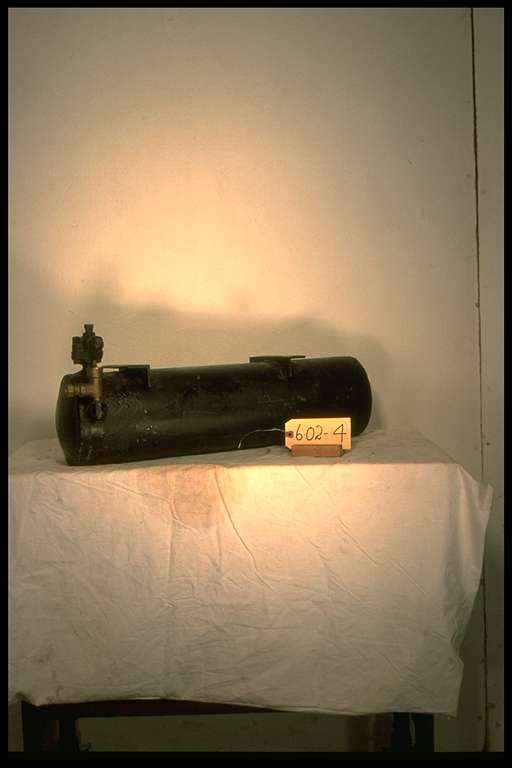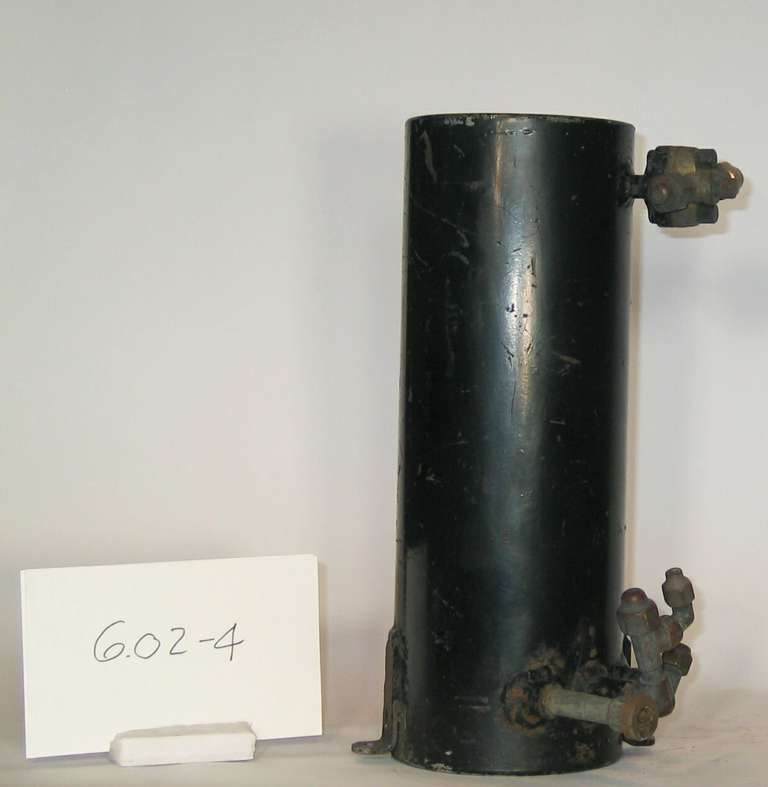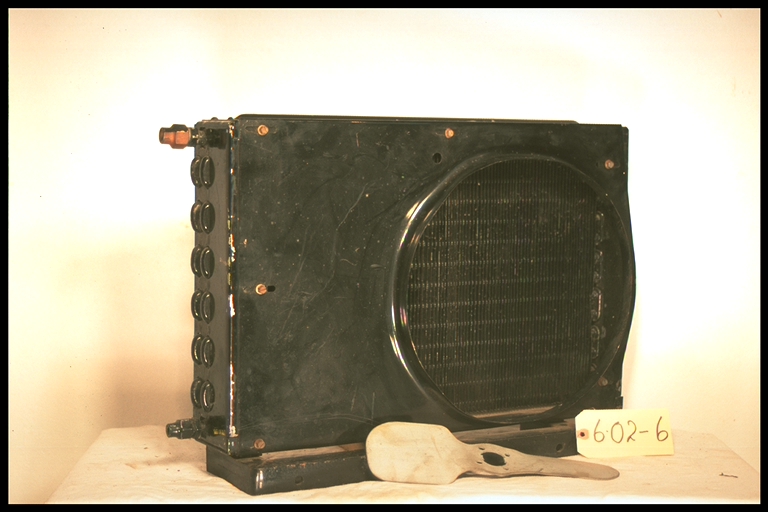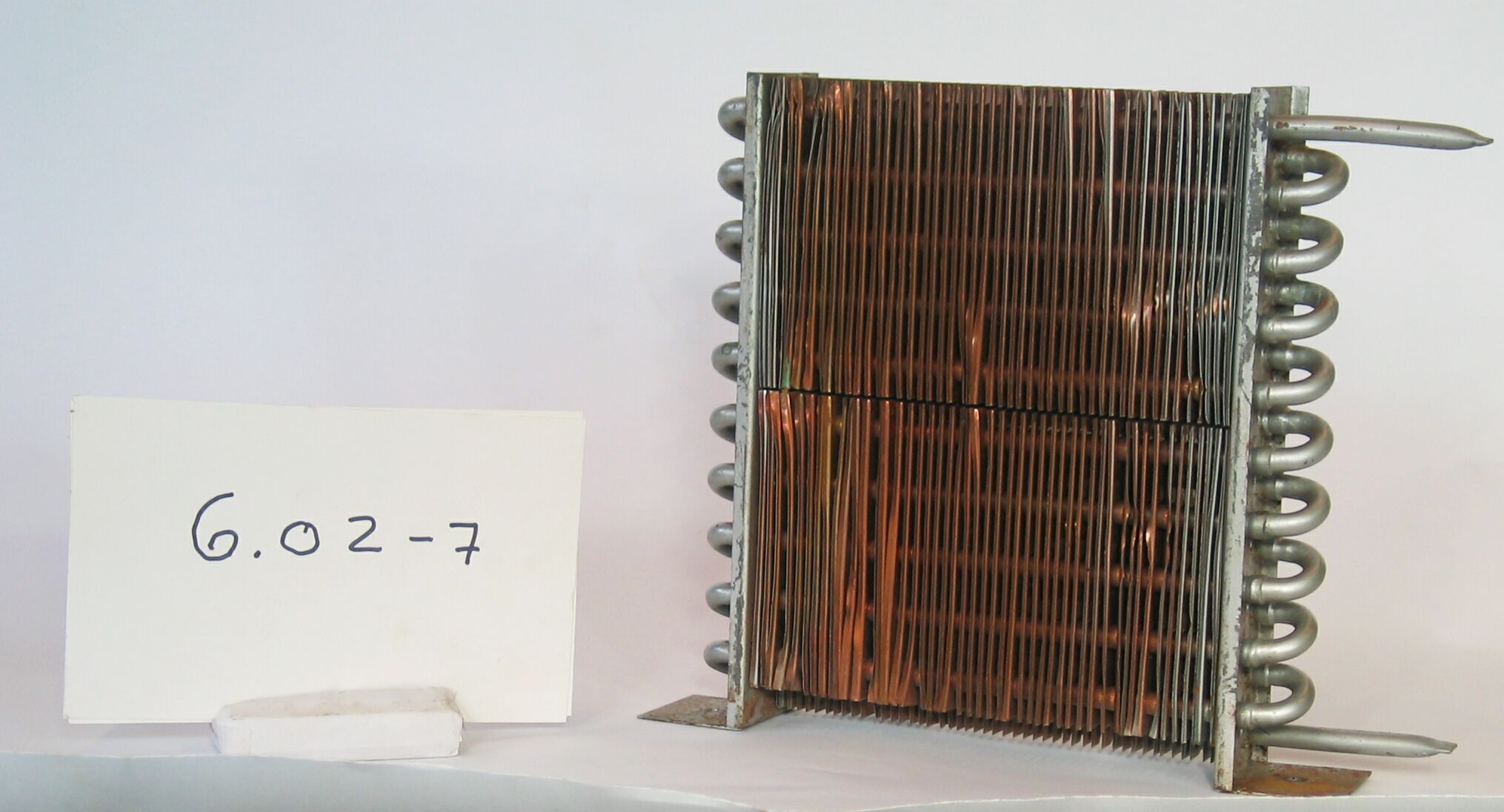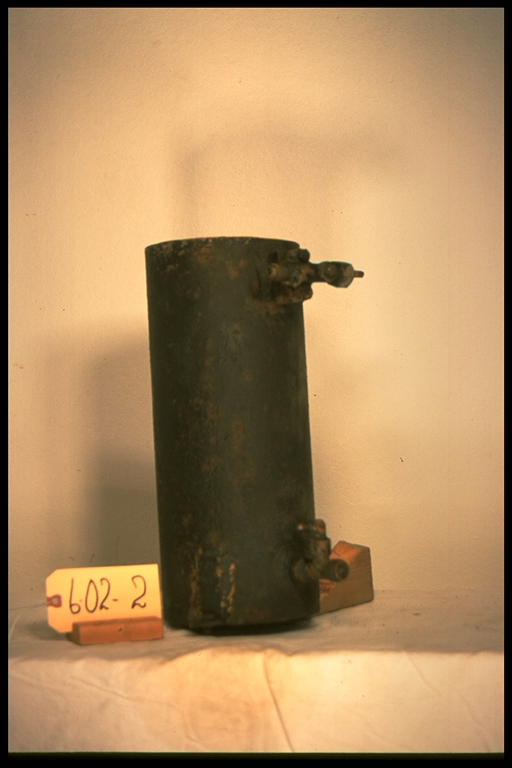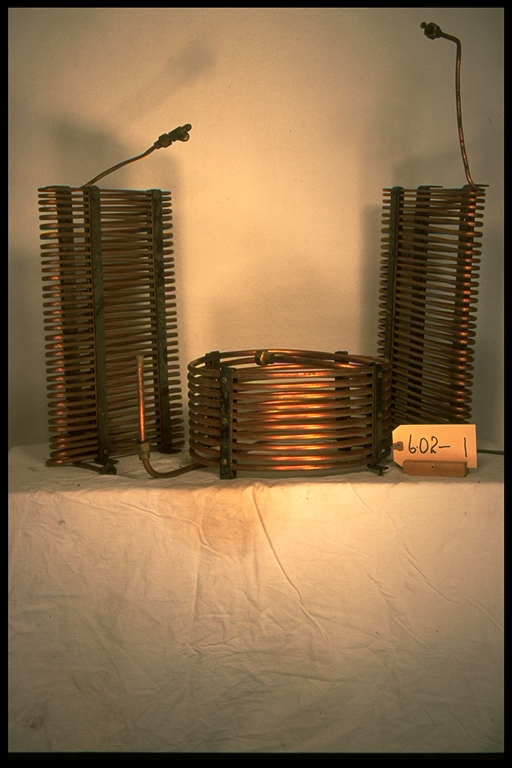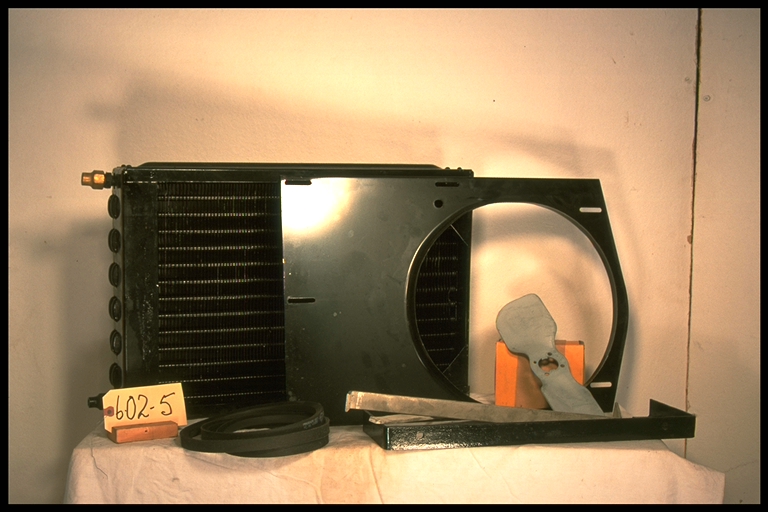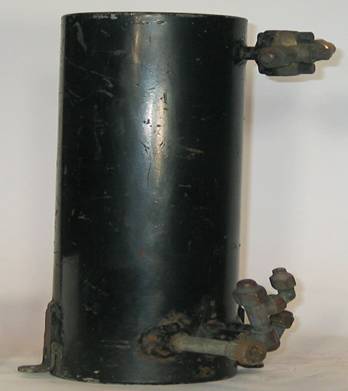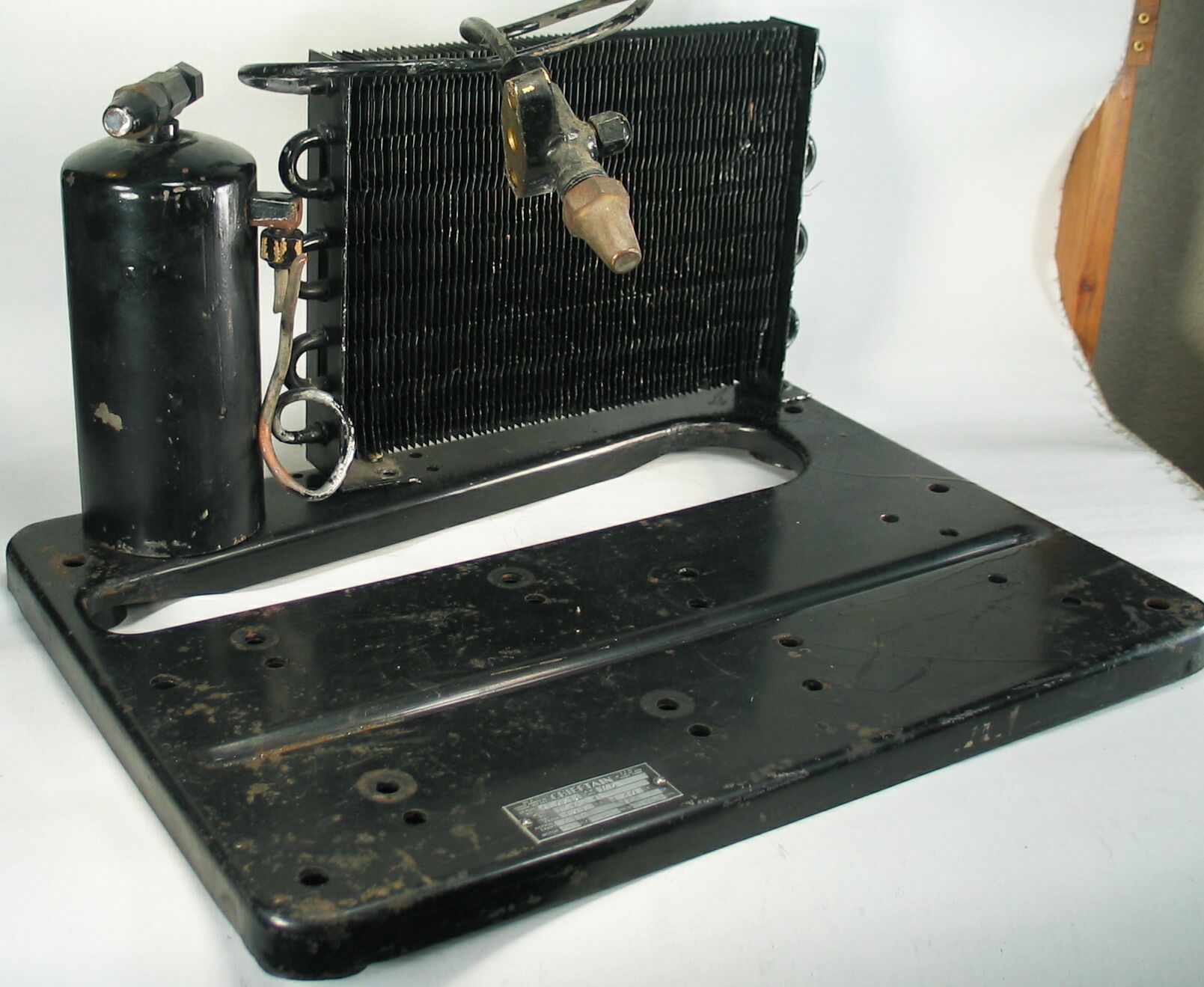6.02-4: Frigidaire 1929 Water-Cooled Condenser - Receiver
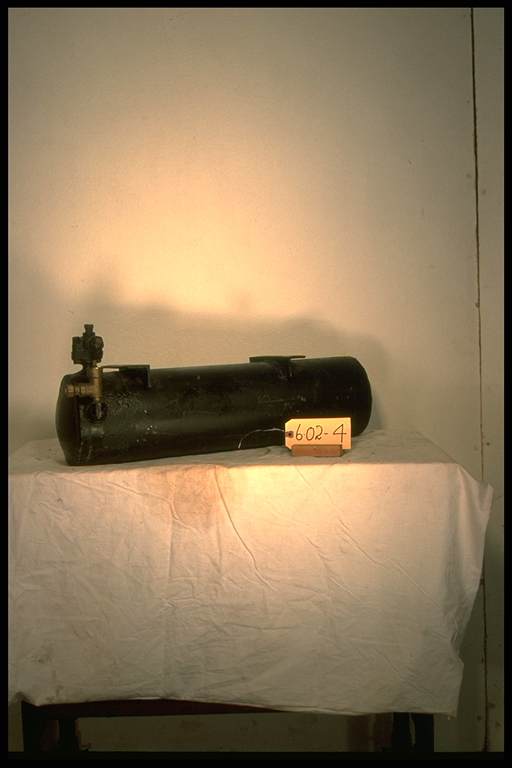
| HHCC Accession No. 2003.063 | HHCC Classification Code: 6.02-4 |
|---|
Description:
An horizontal refrigerant receiver for low-pressure refrigeration machines, as found in Canadian food stores, restaurants and institutional applications in the early years of the 20th century. Painted in machinery black of the period, and holding 25 lbs. of noxious, anhydrous sulphur dioxide, it was fabricated in heavy, rolled steel plate with brazed steel bellied end plates, and equipped with 3/8 inch brass inlet and quarter inch liquid outlet shut off valves for SAE flare connections, as well as welded mounting brackets for four point bolt mount, Frigidaire, 1929.
Group:
6.02 Refrigerating and Air Conditioning Condensers and Receivers - Commercial
Make:
Frigidaire
Manufacturer:
Frigidaire Corporation, Dayton Ohio
Model:
Serial No.:
Size:
6.5 inch dia. x 24 inch long
Weight:
30 lbs.
Circa:
1929
Rating:
Exhibit, education, and research quality, demonstrating the form and structure of early, horizontal steel plate refrigerant receivers, designed for noxious refrigerants and used on small on integral horsepower, commercial application, refrigeration machines in Canada.
Patent Date/Number:
Provenance:
From York County (York Region) Ontario, once a rich agricultural hinterlands, attracting early settlement in the last years of the 18th century. Located on the north slopes of the Oak Ridges Moraine, within 20 miles of Toronto, the County would also attract early ex-urban development, to be come a wealthy market place for the emerging household and consumer technologies of the early and mid 20th century.
This artifact was discovered in the 1950’s in the used stock of T. H. Oliver, Refrigeration and Electric Sales and Service, Aurora, Ontario, an early worker in the field of agricultural, industrial and consumer technology.
Type and Design:
Construction:
Material:
Special Features:
Accessories:
Capacities:
Performance Characteristics:
Operation:
Control and Regulation:
Targeted Market Segment:
Consumer Acceptance:
Merchandising:
Market Price:
Technological Significance:
The use of steel, bellied end plates is a mark of increasing sophistication in strength of materials engineering and manufacturing methods, contrasted with the flat end plates in items 061 and 062.
An example of the significant over design that characterised much of the engineering of early refrigeration machines, following the introduction of low-pressure refrigerants such as SO2.
While the pressures were substantially lower than with ammonia refrigerants, manufactures, with little engineering data to draw on, still used similar high-pressure designed vestals. This practice would quickly change, however, to light rolled steel construction. Containing enough noxious SO2 to clear the house and the neighbourhood, the manufacturer, for now, wished to take no chances.
Industrial Significance:
Socio-economic Significance:
Socio-cultural Significance:
Donor:
G. Leslie Oliver, The T. H. Oliver HVACR Collection
HHCC Storage Location:
Tracking:
Bibliographic References:
Frigidaire Manual, SER405, products mfd. prior to 1937, P9 and 15, Chpt. 1-A
